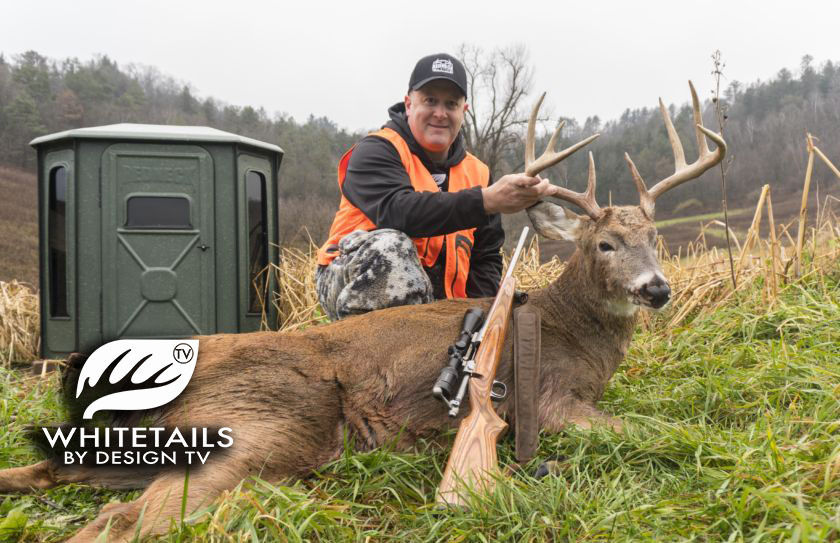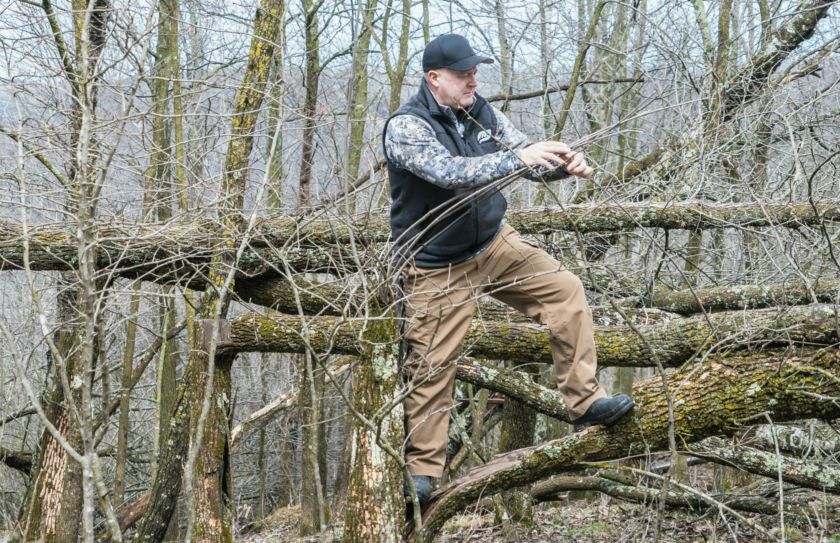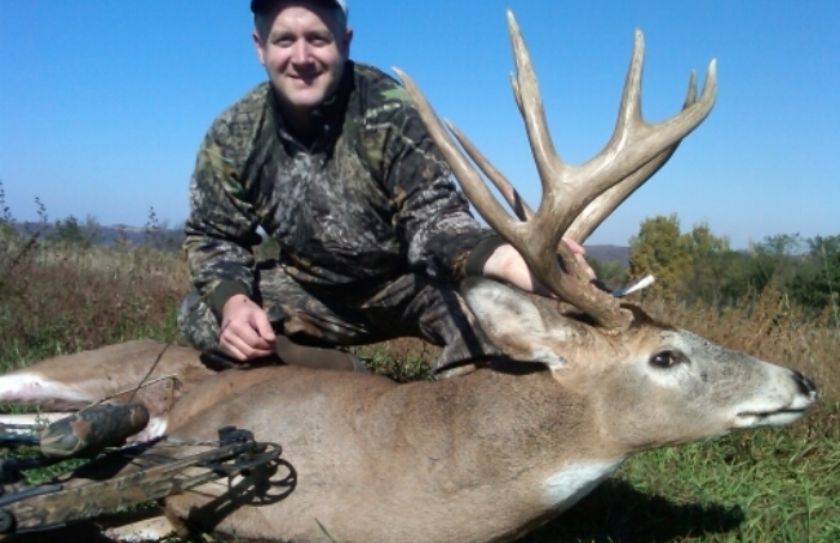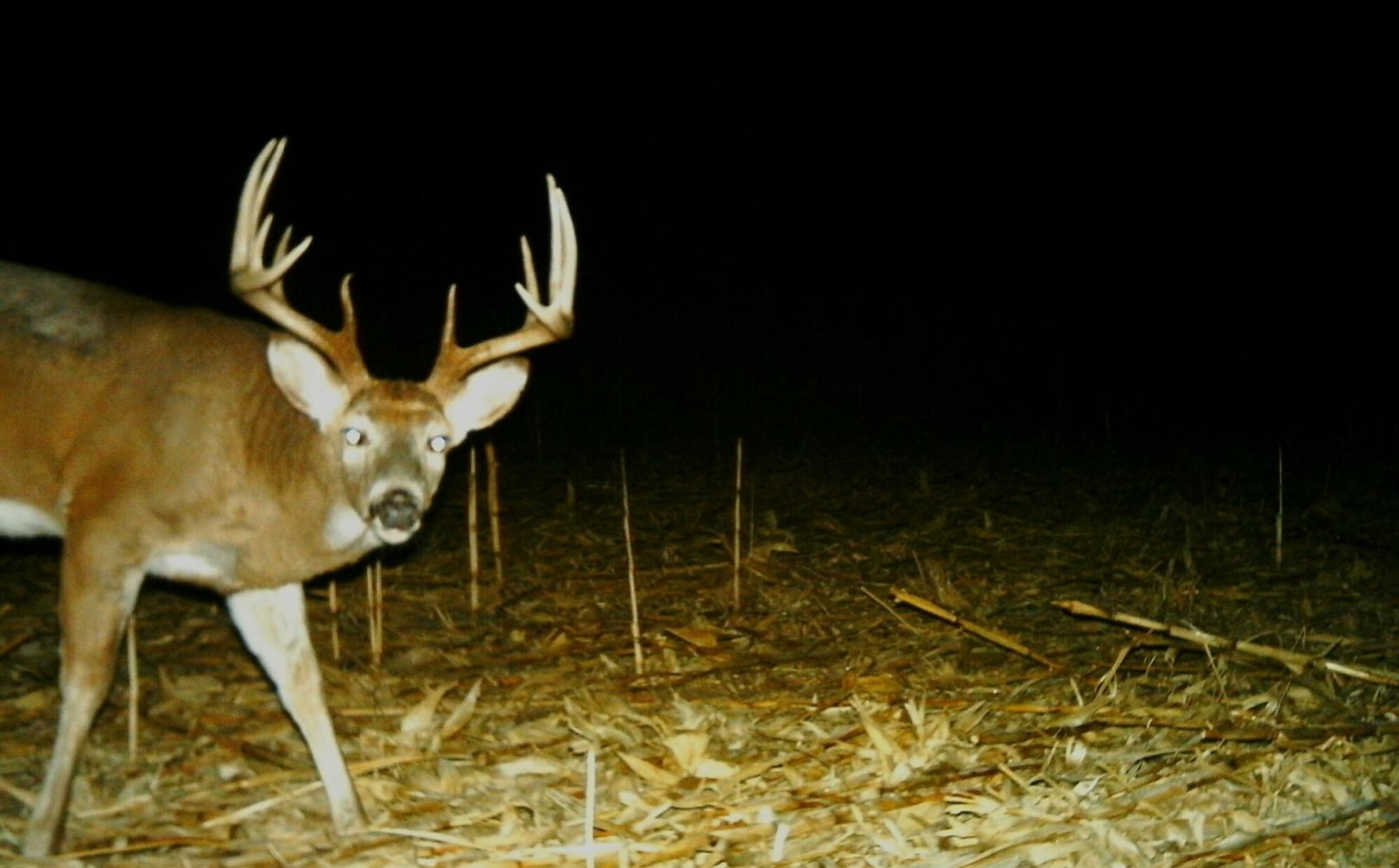
The most important deer habitat strategy that you can build on your own land, is for you to establish, protect and control a whitetail's afternoon feeding movement. The afternoon feeding movement is crtical to the entire deer herd, but it is also the most predictable, and should be the foundation of every quality habitat management effort.
What is the afternoon feeding movement?
During the daytime, deer are stuck within their bedding areas, feeding on a moderate quality level of shoots, buds, briars and sometimes acorns, beach nuts or even the occasional random apple tree. But while their breakfast and lunches are decent in terms of quality and volume, they in no way compare to their dinner. The afternoon food source to a deer's dinnertime is something I believe that a deer thinks about, and plans their entire day around. Although it is hard to determine exactly when a deer will return to their daytime bedding area, you can bet that virtually every deer in the woods is headed to their evening, high quality food source to gorge on whatever the best food source in the area has to offer. You can typically set your watch to a whitetail's internal dinner bell, and that daily activity, creates one of the most important deer habitat strategy that any landowner should focus on.
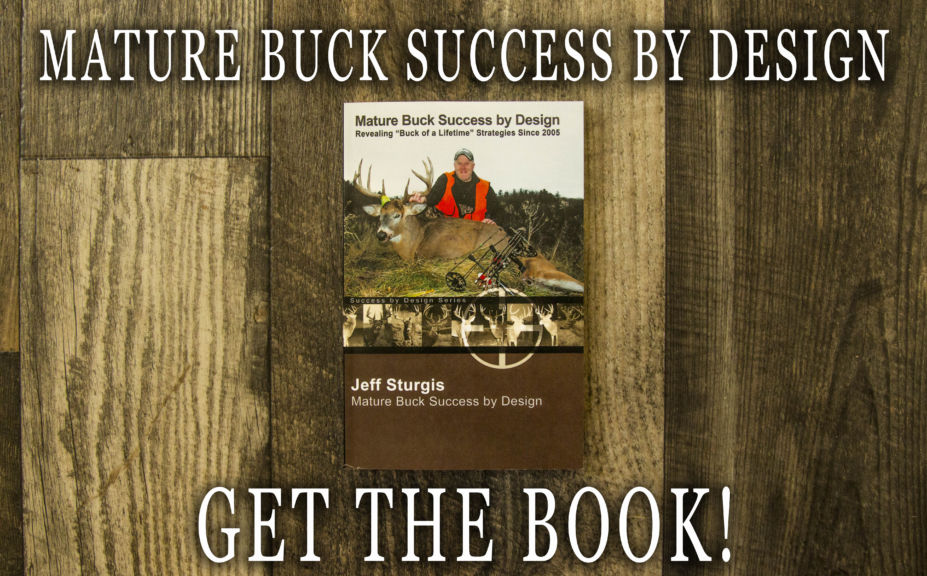
*This critical deer habitat strategy, as well as most any other whitetail related tactic, is covered in my recently completely trilogy of Advanced Whitetail Strategy books, including the recently published"Mature Buck Success by Design", which details how to scout, prepare, forecast for and consistently kill mature bucks.
What are the key ingredients?
Any afternoon focused, deer habitat strategy, that includes both adequate bedding and adequate food, is a great start! You don't need the best food or cover, but instead the safest and most strategically located food and cover. Often land managers focus on quality, when the overall strategy is not complete. If you can combine safe, adequate bedding and food, with safe travel too and from, in a logical pattern that fits the lay of the land, than you are on track! In the cast of one of my small, 40 acre parcels I hunt on, I have created two, "Lines of Movement", that form a large V, pointing towards one major food source at the end of both movement. The deer leave their bedding areas, travel safely without hunter impact (unless we shoot them), and enter the food well before dark. Around dark, the deer then exit the food and head to the surrounding ag lands to stay for the bulk of the night. Having encompassed only the afternoon movement, we capture very few pictures during the middle of the night, as deer dine on the neighbor's ag fields under the cover of darkness for most of the night. We then capture a few pictures as the deer return randomly to their bedding areas in the early morning to mid morning hours.
1. Safe adeqaute bedding, food and travel
2. The entire line of movement should match the lay of the habitat and topography, to mimic natural movement patterns
3. The movement should be protected the entire season, with little influence by hunting pressure, if any at all
Why is this deer habitat strategy so critical?
Without the key ingredients for an afternoon movement, your land will lack definition of movement. If the deer movements are random and lack purpose, so will your hunting approach. By first creating the foundation for deer movement and use, you can then define your hunting approach.
Another critical aspect of controlling the afternoon feeding movement is that typically every parcel in the neighborhood has been hunter-pressured, at a time when the quality of food sources and bedding areas are declining. If you accomplish creating the bedding to dinner time deer habitat strategy on your land, you will offer safe refuge in particular for overly stressed bucks that are looking for safer, quieter pasures to call home, during the most intense portions of the season.
In then end:
When you create and control the movement, free from hunting pressure, you will likely be the only one doing so in the entire neighborhood, which is an extremely high prospect if you are looking to shape a quality deer herd; a deer herd that includes the oldest bucks in the area! Which ingredient is most important in the afternoon feeding deer habitat strategy? All of them. It is more important to establish each and slowly build their quality levels, than to start strong in one area, while neglecting another. It is also important to be able to address the balance that your land already offers. Do you have adequate bedding cover? Then add food. If you have great food, try adding bedding and travel to reach that food source. Once the pieces are in place, it is time to hunt!
